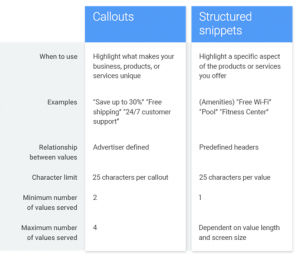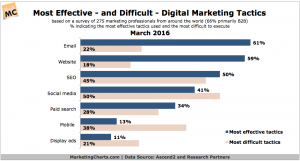Want better performance and results from your marketing? Then give your people the support and resources they need to excel. Here’s how.
The CEO and CMO are talking about investing in the marketing team to develop their skills.
The CEO asks, “What if we invest in our people, and they leave?”
The CMO replies, “What if we don’t and they stay?”
Legend has it that this conversation is real and may have even happened at your company.
Marketing is about people. That means the people you serve — your customers — and the people who do the marketing — your team. The problem is that marketers are often too focused on the former and not enough on the latter.
Your people are the most valuable asset in any marketing team. If you want better performance and results from your marketing, then you must give your people the support and resources they need to excel.
Here are eight simple, low-cost ways to improve your marketing capabilities with minimal effort.
1. The 20% rule
Google became famous for its “20% rule,” which stated that employees could spend 20% of their time on a personal project that they felt would benefit the company the most. And all employees must report their progress and present their projects.
Giving up 20% of employee time sounds like a massive waste, but it turns out it’s quite the opposite. Gmail and AdSense, two of the most well-known and profitable products from Google, are the results of employees’ 20% projects.
Your people have great ideas — they just need the time and permission to make them a reality.
Are you giving your people space to innovate? Or are you suffocating their innovation?
2. Pairing up
Programmers have many interesting tricks to build highly sophisticated software consisting of millions of lines of code and hundreds of people working on the same thing.
One of the most brilliant tactics is a practice called “pair programming.” Just like the 20% rule from Google, pair programming seems like a waste of resources at first glance. Here’s how it works.
Instead of one programmer working on one task, two programmers pair up (hence the name) and work on one task together — except that they both sit at the same computer. One monitor, one keyboard, one mouse and two programmers.
That means that only one programmer is “driving” or operating the computer at a time — they take turns. One person will write some code while the other one watches, learns, asks questions and points out potential problems to avoid. Then they switch roles and keep going.
Having two people work together on the same task means that it gets done faster and more accurately, and now both people understand exactly what happened, how it was done and what decisions were made.
Pair programming is extremely collaborative and magnificently powerful. I recommend all of my clients have at least a half day where their marketing team pairs up to tackle a day’s tasks. The team will learn a lot, get stuff done and get to know and understand each other better.
3. Vault access
One of the easiest and most cost-effective ways to improve the skills of your marketing team is to provide access to a vault of training materials they can access as they wish. Several great platforms, like LinkedIn Learning, can provide lots of value to help your team improve their skills.
These platforms often excel in breadth but lack depth. However, they are a great starting point for marketing teams to expand their knowledge and skills continually.
4. Selective stipend
You can give your team a training stipend to combat the depth issue of providing access to a vault of training materials. The team can spend a set amount of money on specific self-development resources like courses, books, events and more.
Having a stipend is an easy way to manage your investment in the team’s skills while also providing flexibility. However, it requires managing the budget with an approval process to ensure balance and equal access to different resources among the team.
5. Have lunch together
When was the last time your marketing team had lunch together?
Everyone loves a free lunch, and it’s a great way to give your team time to connect and hang out. Plus, you can host a lunch-and-learn where you have someone from the team teach or share their experience.
This is another great example of cross-pollination of skills, just like in pair programming.
It’s not feasible to do a lunch a learn every week, but hosting one once a month or once a quarter is a productive and realistic frequency.
6. Play a game
Games can bring people together and think outside the box. Running a tabletop exercise is a fun way to challenge your team in a safe environment and come up with brilliant ideas and solutions.
A tabletop exercise is a “what if” brainstorming session. You set up a hypothetical scenario and then have the team react as if it actually happened. What would we do? How would we deal with it? How could we make the most of it?
Here’s an example.
Imagine getting most of your website traffic, leads and sales from Google Ads. Now pretend that Google bans your industry from running Google Ads. Poof! All of your traffic, leads and sales are gone overnight.
How would your team respond? What tactics should they pursue instead? How would they reallocate the money that was being spent on Google Ads?
It may seem silly and fictitious, but it stretches the team to challenge their assumptions and explore new and alternative ways of reaching their goals.
And just think what would have happened if companies had run a tabletop exercise to imagine if in-person events disappeared due to a global pandemic — they would’ve been much better prepared.
7. Quarterly workshops
Quarterly workshops are similar to vault access to training materials and a self-development stipend with one major difference. Quarterly workshops are ideally suited to giving a larger group of your team in-depth, custom training on a certain topic or tactic.
For example, you could have a quarterly workshop for your digital marketing team to learn about conversion rate optimization.
This is a cost-effective way to provide collaborative and interactive training for a specific group within your team to improve together. This is especially helpful if you recognize a certain area, tactic, or skill set that the group needs to improve in.
The benefits are immediate and long-lasting. Many of the quarterly workshops I’ve hosted for my clients result in quick wins and conversations in the halls and meetings that demonstrate the lasting impact and transformation of the training experience.
8. Coaching key individuals
When it comes to individual performance improvement, there is no more powerful approach than coaching. You already know who your key team members are — the people who are pivotal to the organization’s success. They must be supported with coaching to some degree if you want the best results. Coaching can turn even great marketers into world-class experts.
The other benefit of coaching is that it improves retention. When people see you’re willing to invest in them, especially with one-on-one coaching, they are more likely to stay engaged and are motivated to push themselves to perform at a higher level.
Improving your marketing starts with people
If you want to improve your marketing performance, it starts with your people.
All of these are great recommendations to improve your marketing capabilities. Choose one to start with and make it happen. Identify the budget, people, and time required. Put it on the calendar and communicate it to the team.
Once you’ve tried one, feel free to try the others. Not all of these will be a good fit for every team, but several are guaranteed to create a positive and lasting improvement in your marketing team’s skills, collaboration, and morale.
Improving your marketing capabilities doesn’t have to be complicated or expensive, it just requires commitment.
The post 8 easy ways to improve your marketing capabilities appeared first on MarTech.
MarTech(11)
Report Post







